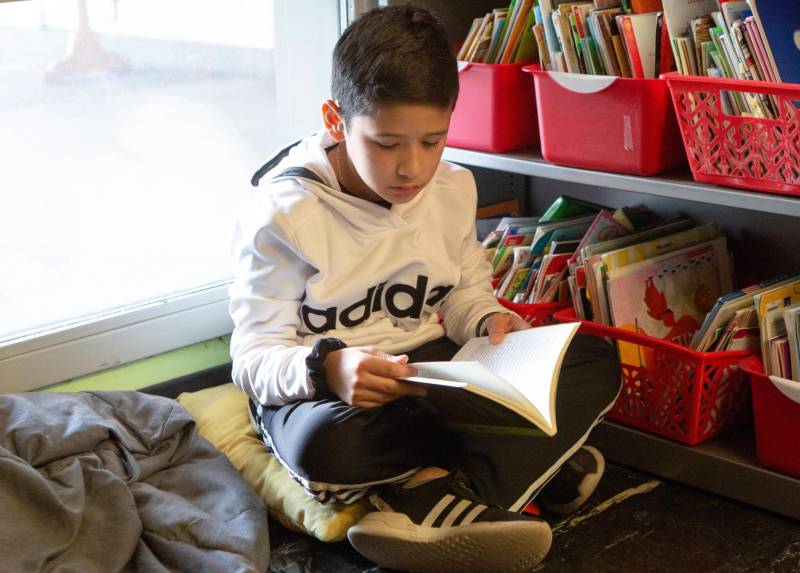“We understand it’s a tough budget year, but we also believe that the most important priority for the education budget is helping our kids learn how to read,” he said.
But he called the move to table the bill a “bump in the road.”
“When we launched with Assemblymember Rubio and the sponsors behind this, we knew it might be a multi-year effort,” he said. “So you get up tomorrow and keep it moving forward.”
Advocates say that it is imperative that California mandates this change in reading instruction. In 2023, just 43% of California third-graders met the academic standards on the state’s standardized test in 2023. Only 27.2% of Black students, 32% of Latino students and 35% of low-income children were reading at grade level, compared with 57.5% of white, 69% of Asian and 66% of non-low-income students.
“The California NAACP was right; this is a civil rights issue,” said Kareem Weaver, a member of the Oakland NAACP Education Committee and co-founder of the literacy advocacy group FULCRUM. “And you don’t play politics with civil rights. The misinformation and ideological posturing on AB 2222 effectively leveraged the politics of fear. We have to do better, for kids’ sake, and can’t give up.”
What is the science of reading?
The science of reading refers to research-based teaching strategies that reflect how the brain learns to read. While it includes phonics-based instruction, which teaches children to decode words by sounding them out, it also includes four other pillars of literacy instruction: phonemic awareness, identifying distinct units of sounds, vocabulary, comprehension and fluency. It is based on research on how the brain connects letters with sounds when learning to read.
The legislation would have gone against the state policy of local control that gives school districts authority to select curriculum and teaching methods as long as they meet state academic standards. Currently, the state encourages, but does not mandate, districts to incorporate instruction in the science of reading in the early grades.
Along with mandating the science of reading approach to instruction, AB 2222 would have required that all TK to fifth-grade teachers, literacy coaches and specialists take a 30-hour-minimum course in reading instruction by 2028. School districts and charter schools would purchase textbooks from an approved list endorsed by the State Board of Education.
English learner advocates opposed bill
It appears lawmakers heard the pleas of advocates for English learners who opposed the bill.
“We know that addressing equity and literacy outcomes is a high priority for California and that our state is not yet where it needs to be with literacy outcomes for all students,” said Martha Hernandez, executive director of Californians Together, one of the organizations that opposed the bill. “AB 2222 is not the prescription that is needed for our multilingual, diverse state.”
She said she is willing to work with lawmakers for a literacy plan based on reading research but that “centrally addresses” the needs of English learners.
California’s proposed legislation to adopt the science of reading approach to early literacy would have been in sync with other states that have passed similar legislation. States nationwide are rejecting balanced literacy as failing to effectively teach children how to read since it de-emphasizes explicit instruction in phonics and instead trains children to use pictures to identify words on sight, also known as three-cueing.
Muratsuchi had until the end of the day Thursday to put the bill on the calendar for the April 17 meeting of the Assembly Education Committee. It would then have had to be heard by the Assembly Higher Education Committee before the April 26 deadline for legislators to get bills with notable fiscal impacts to the Appropriations Committee. Now, the bill will have to be reintroduced next year to get a hearing.
“It’s really too bad. Lots of kids are not being well-served now. But on the other hand, I hope this will be an opportunity to regroup and present a more robust version of the bill,” said Claude Goldenberg, a Stanford University professor emeritus of education who supported the bill.
Goldenberg said a future version of the bill should include a “more comprehensive definition” of the “science of reading” and should make clear that this includes research on teaching reading to all students, including English learners.
“English learners, for example, would benefit if teachers knew and used research that is part of the science of reading and applies whether they’re learning in their home language or in English. Same for children with limited literacy opportunities outside of school and children having difficulty learning to read,” Goldenberg said.
‘Backroom politics’
Lori DePole, co-state director of Decoding Dyslexia CA, one of the supporters of the bill, expressed frustration Thursday evening over the decision to table it.
“It is shameful that when more than half of CA kids aren’t reading at grade level that our legislators are okay with the status quo, and they have killed this literacy legislation without even allowing it to be heard,” she said in a statement.
“… CA kids’ futures are too important to allow backroom politics to silence this issue. We will no longer accept lip service in addressing our literacy crisis. It is time for action, and we aren’t going away.”
Advocates for students with dyslexia support the phonics-based teaching methods as especially effective for children with a learning disability.
Muratsuchi said he supports the science of reading. “However, we need to make sure that we do this right by serving the needs of all California students, including our English learners,” he said in a statement to EdSource. “California is the most language-diverse state in the country, and we need to develop a literacy instruction strategy that works for all of our students.
“I thank Speaker Robert Rivas for his decision to pursue a more deliberative process involving all education stakeholders before enacting a costly overhaul of how reading is taught statewide,” he said.
